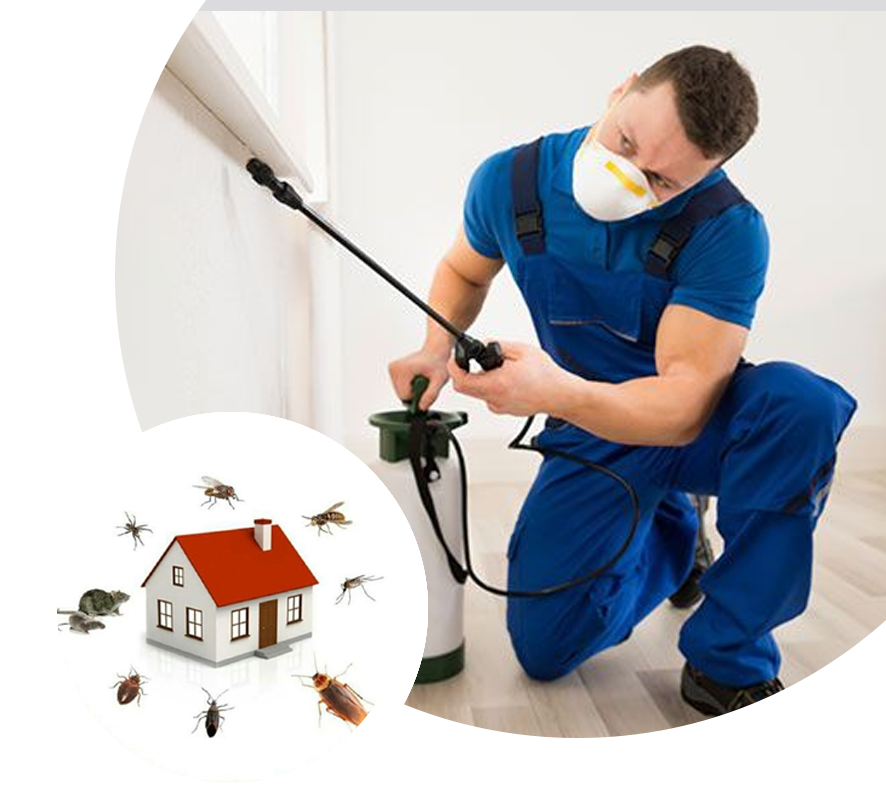Efficient Bed Bug Treatment: Remove Infestations Safely!
Efficient Bed Bug Treatment: Remove Infestations Safely!
Blog Article
Specialist Parasite Control Techniques for Long-Term Outcomes
Professional pest control techniques envelop a comprehensive approach that begins with a thorough examination and assessment, adhered to by precise parasite recognition to understand their behavior patterns. The execution of Integrated Pest Administration (IPM) concepts, coupled with eco-conscious treatments, creates the cornerstone of lasting insect elimination.
Evaluation and Analysis
Upon getting in a property for insect control solutions, the first action is an extensive evaluation and analysis to determine the level of the infestation and figure out one of the most effective treatment plan. Expert insect control technicians are trained to carefully take a look at the properties, looking for signs of bug task such as droppings, munch marks, nests, or any type of architectural damage. They will likewise examine the problems that might be drawing in parasites, such as food resources, water leaks, or entry factors.

Pest Recognition and Habits

Moreover, comprehending the actions of the determined pest is vital to implementing efficient control procedures. For example, knowing where insects nest, what they eat, and their task patterns can help pest control experts design approaches to eradicate them effectively. Some pests may be nocturnal, while others are more active throughout the day. This understanding permits the application of treatments at optimum times for maximum performance.
Integrated Parasite Monitoring (IPM)
Integrated Bug Management (IPM) techniques combine multiple strategies to manage and avoid pest problems in a lasting and ecologically friendly way. bed bug heat treatment. By incorporating approaches such as biological control, habitat adjustment, adjustment of cultural practices, and making use of immune ranges, IPM aims to decrease the usage of chemical pesticides
One of the crucial principles of IPM is the focus on prevention. This positive technique includes monitoring bug populaces frequently to spot any kind of prospective concerns before they rise. By determining parasite troubles early, pest control measures can be applied swiftly and properly.
Furthermore, IPM advertises the usage of non-toxic bug control methods whenever possible. This can include employing all-natural killers of the insects, presenting helpful pests, or using scents to disrupt mating patterns. By reducing reliance on chemical pesticides, IPM not just protects the atmosphere yet additionally helps preserve an equilibrium in the community.
Environmentally-Friendly Therapies
Implementing eco-conscious methods in parasite control procedures can properly address invasions while focusing on environmental sustainability. Environmentally-friendly treatments concentrate on decreasing the impact of bug control approaches on communities, non-target microorganisms, and human wellness. These techniques often involve making use of natural killers, such as ladybugs or nematodes, to regulate pest populaces, reducing the requirement for chemical treatments. In addition, techniques like habitat adjustment, such as readjusting moisture degrees or removing food sources, can help deter insects without using dangerous materials.
One more secret aspect of environmentally-friendly treatments is using organic and naturally degradable products that break down rapidly without leaving unsafe residues in the setting. Agricultural pesticides originated from plants like chrysanthemums or neem use efficient insect control while posing marginal danger to non-target species. Using approaches like warm treatments or scent traps can target specific parasites with precision, decreasing the total ecological impact of parasite control methods.
Continuous Tracking and Maintenance
Consistent surveillance and maintenance are necessary components of reliable pest control monitoring. Recurring tracking plays an important role in making sure that insect problems are discovered very early and handled without delay. Regular assessments by experienced professionals are essential to identify any type of indications of parasite task, assess the performance of previous treatments, and make adjustments to the parasite control plan as required. By monitoring insect populaces with time, parasite control experts can track patterns, expect prospective concerns, and implement precautionary actions to decrease the risk of future infestations.
Along with surveillance, upkeep methods are vital for lasting insect control success. This consists of carrying out appropriate sanitation actions to get rid of potential food and water resources for bugs, sealing off access indicate prevent parasites from going into the properties, and attending to any architectural issues that could assist in insect infestations (exterminator near me). By including continuous tracking and upkeep into an incorporated pest administration method, services can ensure a pest-free atmosphere and secure their building against expensive damages and health risks
Final Thought
Finally, utilizing professional bug control strategies such as comprehensive assessment and analysis, accurate insect recognition and understanding of their behavior, integrated insect monitoring strategies, environmentally-friendly treatments, and continuous surveillance and upkeep are important for accomplishing long-lasting outcomes pest control in bug control. By carrying out these approaches, people can properly manage pest infestations and maintain a pest-free environment in a sustainable way.
Report this page